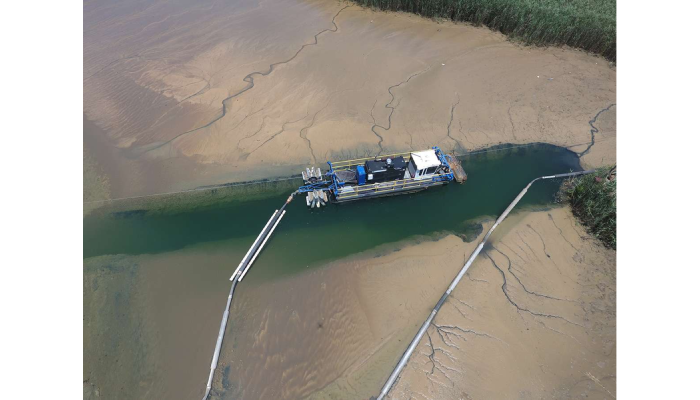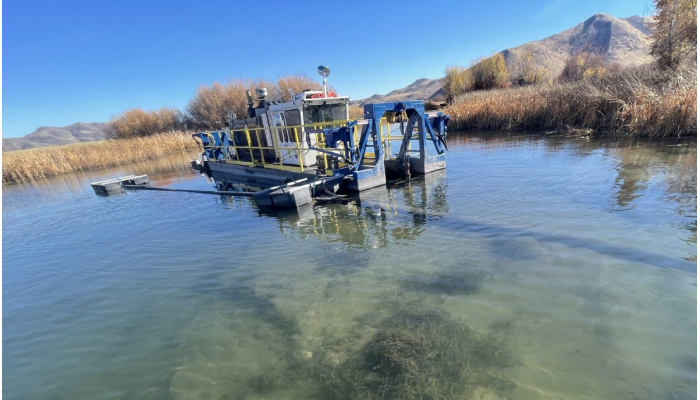Dredging plays a crucial role in maintaining waterways, improving navigation, and restoring aquatic ecosystems. However, traditional dredging methods can have significant environmental impacts, including habitat destruction, sediment resuspension, and water contamination. An alternative approach, auger dredging, offers an environmentally friendly solution. This article explores the environmental benefits of auger dredging and its role in sustainable dredging practices.
What is Auger Dredging?
Auger dredge is a specialized dredging technique that utilizes a rotating auger head to cut and transport sediment with minimal disruption to the surrounding environment. Unlike traditional dredging methods, such as cutter suction or clamshell dredging, auger dredging is designed to work with precision, reducing sediment disturbance and ensuring targeted material removal. This method is widely used for contaminated sediment cleanup, environmental restoration, and maintenance dredging in sensitive ecosystems.

Environmental Benefits of Auger Dredging
Minimized Sediment Resuspension
One of the major concerns with traditional dredging methods is sediment resuspension, which can lead to increased turbidity and the spread of contaminants. Auger dredging significantly reduces this impact by employing a slow-moving, enclosed auger head that efficiently collects and transports sediment with minimal disturbance. This helps protect water quality and prevents harmful pollutants from being redistributed throughout the waterway.
Precise and Controlled Dredging
Auger dredging allows for precise sediment removal, making it an ideal choice for projects in environmentally sensitive areas such as wetlands, lakes, and riverbeds. The targeted approach ensures that only the necessary material is removed, avoiding unnecessary damage to aquatic habitats and minimizing disruption to marine life.
Reduced Energy Consumption and Carbon Footprint
Compared to traditional dredging methods, auger dredging requires less energy due to its efficient sediment collection and transport system. The controlled operation reduces fuel consumption, which in turn lowers greenhouse gas emissions and contributes to more sustainable dredging operations.
Effective Contaminated Sediment Management
Many waterways are contaminated with heavy metals, hydrocarbons, and other toxic substances due to industrial and agricultural runoff. Auger dredging is an effective method for removing contaminated sediments without dispersing pollutants into the water column. The enclosed design of the auger head ensures that dredged materials remain contained and can be safely transported for treatment or disposal.
Preservation of Aquatic Habitats
Traditional dredging methods can disrupt aquatic ecosystems by disturbing benthic organisms, altering habitat structures, and affecting fish populations. Auger dredging, with its low-impact approach, minimizes habitat destruction and allows aquatic life to recover more quickly. This makes it an excellent choice for projects focused on environmental restoration and habitat conservation.
Applications of Auger Dredging in Environmental Projects
Due to its environmentally friendly nature, auger dredging is widely used in various applications, including:
- Wetland Restoration: Restoring natural habitats by carefully removing excess sediments and contaminants.
- Lake and Pond Maintenance: Preventing eutrophication and improving water quality.
- Industrial Site Cleanup: Removing legacy pollution from former industrial areas.
- Navigational Dredging: Ensuring safe and sustainable waterway access without excessive environmental impact.
Conclusion
As environmental concerns continue to shape industrial and infrastructural projects, sustainable dredging methods like auger dredging are becoming increasingly valuable. By offering a low-impact, precise, and efficient alternative to traditional dredging techniques, auger dredging helps protect water quality, preserve aquatic habitats, and manage contaminated sediments responsibly. Investing in eco-friendly dredging practices ensures the long-term health of our waterways and contributes to a more sustainable future.

Fran Bullock, a literary explorer rooted in the charm of England, unearths stories that resonate with the echoes of history. With a quill dipped in nostalgia, she pens tales that bridge the past and present, weaving narratives that captivate the soul.




